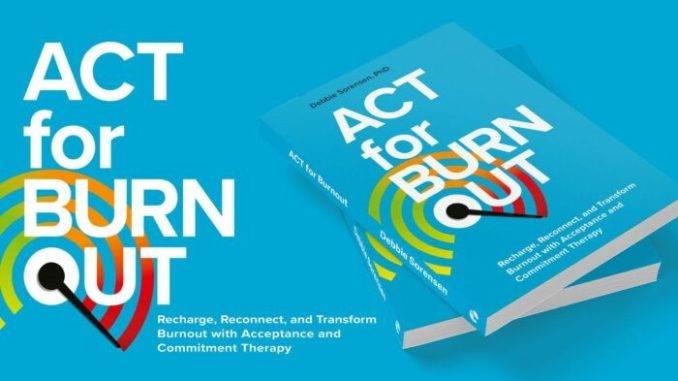
In the relentless pace of modern life, where productivity is often hailed as the ultimate virtue and the lines between work and personal life increasingly blur, the concept of “burnout” has transitioned from a niche psychological term to a widely recognized and concerning phenomenon. More than just stress or temporary fatigue, burnout is a state of chronic physical, emotional, and mental exhaustion caused by prolonged or excessive stress. It’s a gradual erosion of energy, enthusiasm, and efficacy that can severely impact an individual’s well-being, relationships, and professional performance. Recognizing the insidious signs of burnout early is not just a matter of self-care; it’s a critical step in preventing its debilitating effects and reclaiming a sense of balance and purpose.
One of the most prominent indicators of impending burnout is profound and persistent exhaustion. This isn’t the kind of tiredness that a good night’s sleep or a relaxing weekend can alleviate. Instead, it’s a deep-seated weariness that permeates every aspect of life, making even simple tasks feel overwhelming. Waking up feeling drained despite adequate rest, experiencing constant fatigue throughout the day, and lacking the energy for previously enjoyed activities are all red flags. Imagine an individual who once eagerly tackled complex projects now finds themselves constantly dragging their feet, feeling physically heavy and mentally sluggish. This pervasive energy depletion affects not just work tasks but spills over into personal life, making it difficult to engage with hobbies, friends, or family. It’s a sense of being perpetually “running on empty,” with no readily available fuel to replenish the tank.
Alongside physical exhaustion, a significant emotional shift often characterizes burnout: cynicism and detachment. What was once a source of passion or interest begins to feel mundane, irritating, or even pointless. Individuals may develop a negative or indifferent attitude towards their work, colleagues, or clients. This can manifest as an increased sense of irritability, a tendency to lash out, or a general feeling of emotional numbness. Consider a dedicated teacher who once thrived on connecting with students now finding themselves disengaged and cynical about their profession, or a compassionate healthcare worker becoming emotionally hardened and indifferent to patients. This emotional distancing is often a coping mechanism, an unconscious attempt to protect oneself from the overwhelming demands by creating a barrier. However, it ultimately leads to a loss of empathy, purpose, and joy in one’s work and life.
A third critical sign is a marked decrease in professional efficacy or a diminished sense of accomplishment. Despite putting in long hours, individuals experiencing burnout often feel less productive and effective than before. Tasks that were once manageable become daunting, creativity wanes, and a feeling of inadequacy sets in. They might struggle with concentration, make more mistakes, or find it difficult to complete assignments on time. This isn’t due to a lack of effort or capability, but rather the cumulative effect of exhaustion and cynicism eroding their cognitive function and motivation. An entrepreneur who previously felt limitless in their potential might find themselves procrastinating on crucial decisions, feeling overwhelmed by their responsibilities, and questioning their ability to succeed. This self-doubt, coupled with actual declines in performance, can create a vicious cycle, further exacerbating the feeling of burnout.
Beyond these core symptoms, several other behavioral and physical manifestations can signal burnout. Sleep disturbances are common, ranging from difficulty falling asleep due to an overactive mind to restless nights and early waking. Changes in appetite, either increased or decreased, can also occur, sometimes leading to unhealthy eating habits. Individuals might experience an increase in physical ailments such as headaches, muscle pain, digestive issues, or more frequent colds and infections, as chronic stress compromises the immune system. Social withdrawal is another prevalent sign, as the energy required for social interaction becomes too taxing. An individual might start declining invitations, preferring solitude over engagement, further exacerbating feelings of isolation. Substance use, whether alcohol, caffeine, or other drugs, might increase as a maladaptive coping mechanism to manage stress or induce sleep.
Recognizing these signs requires honest self-assessment and often, the keen observation of close friends, family, or colleagues. It’s easy to dismiss early symptoms as temporary stress or a bad day. However, when these indicators become persistent, pervasive, and impact multiple areas of life, it’s crucial to acknowledge them as symptoms of burnout. This recognition is not a weakness but a strength, empowering individuals to take proactive steps towards recovery and prevention. It might involve setting stricter boundaries between work and personal life, delegating tasks, seeking support from supervisors or mental health professionals, incorporating stress-reduction techniques like mindfulness or exercise, or even considering a career change. The path back from burnout is a journey of self-recalibration, and the first, most vital step is always to acknowledge the presence of its warning signs.